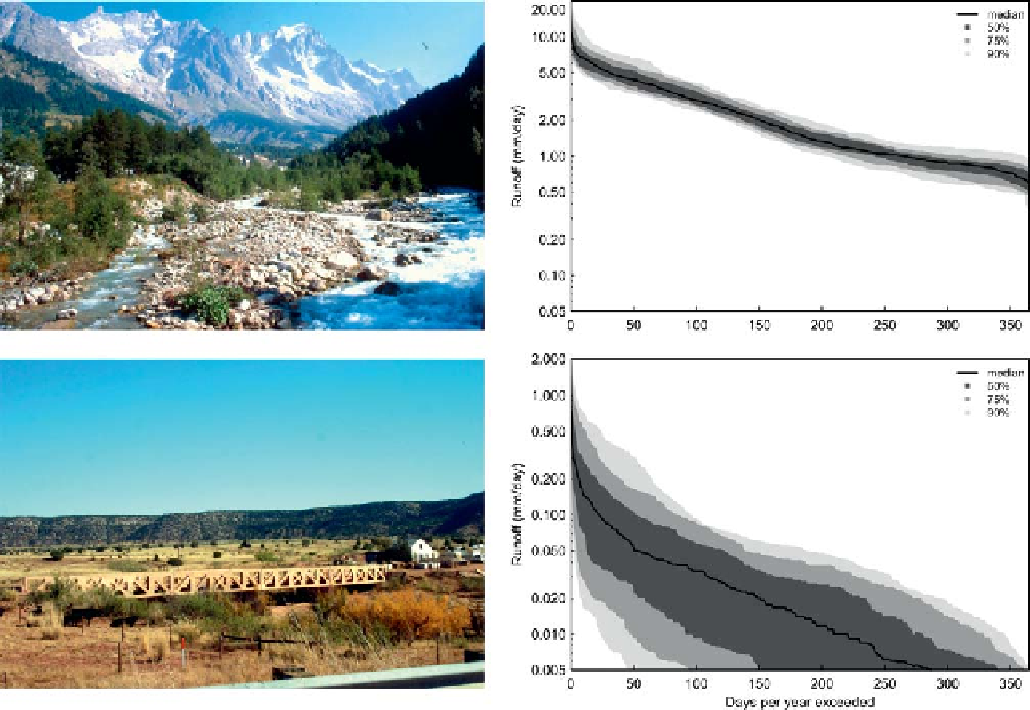Geography Reference
In-Depth Information
Figure 7.3. Median and between-year variability of FDCs. (Top) Dora Baltea at Tavagnasco, Italy (area 3311 km
2
, mean annual
precipitation 949 mm); (bottom) Mora near Shoemaker, New Mexico, USA (area 2859 km
2
, mean annual precipitation 483 mm). Photos:
A. Maiorana, K. Ahler.
runoff model output and for calibrating such models (e.g.,
Fennessey,
1994
; Westerberg et al.,
2011
), for filling gaps
and extending daily runoff time series and, when a regional
FDC model is available, for generating runoff series in
ungauged river basins (
Chapter 10
). FDCs can also be used
to define low flows and perform low flow frequency ana-
lyses (
Chapter 8
).
catchment in northern Italy is perennial, but with very little
inter-annual variability. It is clear that the FDCs for each
catchment are very different, and this section aims to
address why they are so different. For predictions in
ungauged basins it is essential to understand what factors
cause FDCs to vary between catchments. The notion of
hydrological similarity in the context of FDCs helps us to
group similar catchments together. Understanding of the
climatic and landscape (catchment) controls on the FDCs
can enable the extrapolation of empirical FDCs derived
from gauged catchments to ungauged catchments within a
similar or homogeneous region. Likewise, understanding
of the process controls of the observed FDCs helps not
only to delineate homogeneous regions but also to use
appropriate process models
7.2 Flow duration curves: processes
and similarity
Figure 7.3
presents illustrative examples of two FDCs for
comparative analysis. The FDCs have been plotted for
two catchments of similar size, but located in contrasting
hydrological regions, one in northern Italy and the other in
New Mexico, USA. The FDCs indicate that the catchment
in New Mexico is not only ephemeral, but also has signifi-
cant inter-annual (between-year) variability, a normal char-
acteristic for ephemeral catchments. On the other hand, the
to extrapolate/reconstruct
FDCs in ungauged basins.
This section first discusses the process controls respon-
sible for the shapes of FDCs, and how these are governed
by the combination of climate and catchment characteris-
tics. This understanding is then used to formulate a list of

Search WWH ::

Custom Search